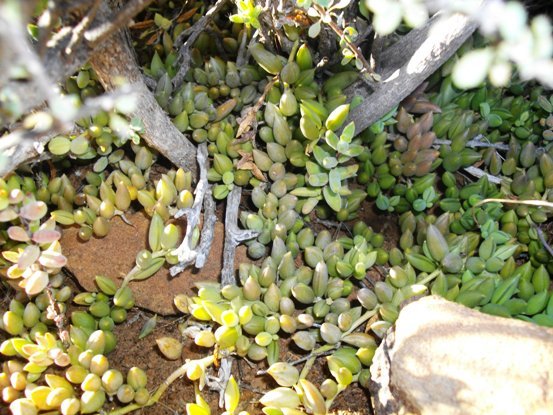Curio radicans

Author: Ivan Lätti
Photographer: Ivan Lätti
Curio radicans, in Afrikaans known as kraaltjies (little beads) and previously scientifically as Senecio radicans, is a creeping, succulent perennial branching its many mat-forming stems on the ground. It rarely exceeds 5 cm in height.
The string of beads analogy is very apt for these leaves that are far more attractive than the flowers.
The species distribution is widespread in the west and south of South Africa, from Namibia and the Northern Cape through the Western Cape and the Eastern Cape, as well as in parts of the Free State.
The habitat is karoid veld made up of succulent Karoo and Nama Karoo, also fynbos and Albany thicket. The plant responds to rain, surviving through dry seasons on its ample succulence and the shade of taller plants. The species is not considered to be threatened in its habitat early in the twenty first century.
C. radicans is grazed by game and livestock. Another of its colloquial names in Afrikaans, bokkos, means goat food or antelope food. The word bok meaning either animal (Vlok and Schutte-Vlok, 2015; Shearing and Van Heerden, 2008; iNaturalist; http://redlist.sanbi.org).

